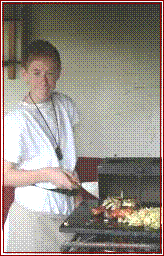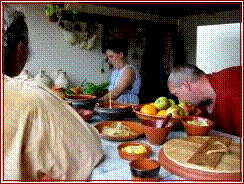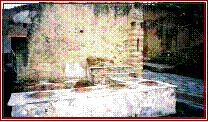
|
To contact us: |

|
Fast Food Empire |
|
Ordinary Romans had no shortage of places where they could get themselves around a good meal and a drink -- no wonder, when many apartments in Roman towns and cities had no cooking facilities at all. There was the taberna (pub), the fornix (cellar bar), the caupona (more of a disreputable dive, really) the ganea (cookshop or eating-house) and the popina (a Roman fast-food outlet, possibly with seating). The entertainment might include dicing as well as dancing and singing. None of these were places you would normally find your average patrician, though some were not above dressing down and trawling the bars for amusement. According to many contemporary writers, a lot of these places were little more than brothels, though they might serve alcohol and the odd scrap of food. There were many attempts to regulate or even ban them, none successful for any length of time.
|

|
Griddled sausages— a very popular Roman street snack |


|
With many Romans forced to live in wooden tenements, cooking was prohibited driving the creation of hot food stands on the streets. |

|
Hot drinks stall in Pompeii, Italy |
